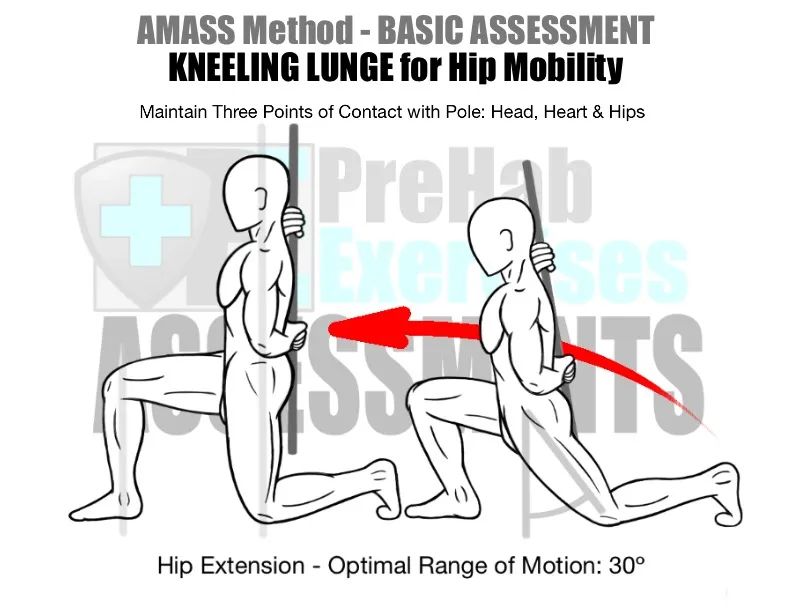In the human body, 206 bones, 360 joints and 640 muscles form human motion, which shows that the possibility of biomechanics and joint kinematics (movement of joint structure) increases exponentially.
The first “a” represents the first stage: assessment assesses an individual’s body alignment and exercise quality.

To accurately evaluate human motion, we need to have an in-depth understanding of how the human body works, especially the biomechanics, joint kinematics, physiology and neurology.
More importantly, these assessments and motor evaluations help highlight the limitations of mobility (flexibility and joint range of motion ROM) and stability (motor control and coordination), which will hinder individuals from developing good motor ability, let alone expressing their best state.

All these make the evaluation of human motion more like a detailed science than a simple observation.
Why evaluate? All human movements are task oriented, which means that when a person moves, by default, the person’s consciousness / focus is focused on the task to be completed by the movement, such as picking up a pencil from the floor.
More specifically, PREhab exercise helps to counteract the negative effects of repetitive exercise in an individual’s exercise, training or lifestyle, and helps individuals correct their physical compensatory patterns and motor dysfunction.
Correction and improvement exercise PREhab pre rehabilitation exercise is a specialized training designed to restore biomechanical integrity and improve the quality of an individual’s exercise, so as to ultimately reduce the risk of injury, enhance performance and increase an individual’s life in specific sports, activities or general sports.





For example, based on the following methods, experienced therapists can evaluate potential human functional problems and make effective evaluation and training design.
These basic assessments and exercise assessments can inform an individual’s physical performance in sports.

In the PREhab runner’s Workbook – Fourth Edition, author Michael Rosengart introduces the following assessment and movement analysis as part of a.m.a.s.s.


More specifically, these successive stages focus on improving the activity ability (joint mobility and the flexibility and responsiveness of the organization), activating the core muscles required for training performance, stabilizing the joints to create the maximum body control and movement efficiency, and finally enhancing the specific quality and strength of the body, namely, strength generation, strength absorption, strength resistance, speed, agility Skills development, etc.
However, it all starts with the first “a”: assessment.

In the a.m.a.s.s.
method.

In terms of prescribing exercise and designing exercise, if you don’t evaluate it, you’re just guessing! Use these basic body alignment and exercise assessments to create an effective PREhab exercise program for runners or athletes.

Focusing on a single movement can improve movement and physical performance while reducing the risk of injury.
In other words, exercise evaluation is the process of understanding whether the human body works normally or not.
Assessment is the first step in the pre rehabilitation a.m.a.s.s.



When evaluating human movement, hundreds of biomechanical, joint kinematics, physiological or neurological operations and relationships are carried out in batches, which can help individuals evaluate a person’s movement style, and then help them with rehabilitation, injury prevention, corrective movement and training..
Individuals pay little attention to “how” to exercise unless they suffer some kind of injury.
“Trained eyes” 2 In depth understanding of specific measurements when effectively evaluating the movement style of athletes or customers, coaches and physiotherapists need to cultivate “trained eyes” or conduct more detailed and accurate human movement chain analysis than the naked eye through advanced technical means, Help therapists and coaches more easily and accurately provide “assessment” to clients and have an in-depth understanding of human biomechanical measurement.

Batch processing is the process of dividing projects / concepts into groups and studying the dynamics (relationships) within the group, which can help individuals learn, understand, recall and process more information faster.
A.
Michael Rosengart, CPT, CES, CSCs outlined the importance of evaluating movements and shared the basic and exercise evaluations for runners and athletes in the pre run exercise manual (Fourth Edition).

Cyberbox intelligent motion function evaluation system evaluates human motion.
However, regular evaluation helps to optimize biomechanical function and improve its life cycle, so as to reduce the risk of injury.
method, evaluation is a prerequisite before forming a “prescription” or selecting PREhab action practice to successfully complete the following stages of activity mobility (m), activation (a), stability (s) and strength (s).
The first step in properly starting any effective training or rehabilitation / rehabilitation program is to evaluate athletes or service customers on sports quality and biomechanics.
Batchbatchbatching has a way to help you understand all aspects of human motion – biomechanics, joint kinematics, and physiological and neurological factors.
Batching is a learning concept that can greatly help individuals make more accurate assessments.
How to evaluate: evaluation is the investigation and analysis of the structure and its corresponding dynamics (motion) to understand the causal relationship and function between the components of the structure.



1.
The m.a.s.s.

approach is PREhab’s strategic approach, which is divided into five main stages, all of which are represented by acronyms.

Help individuals choose the most appropriate PREhab pre rehabilitation exercise method into their training program.





